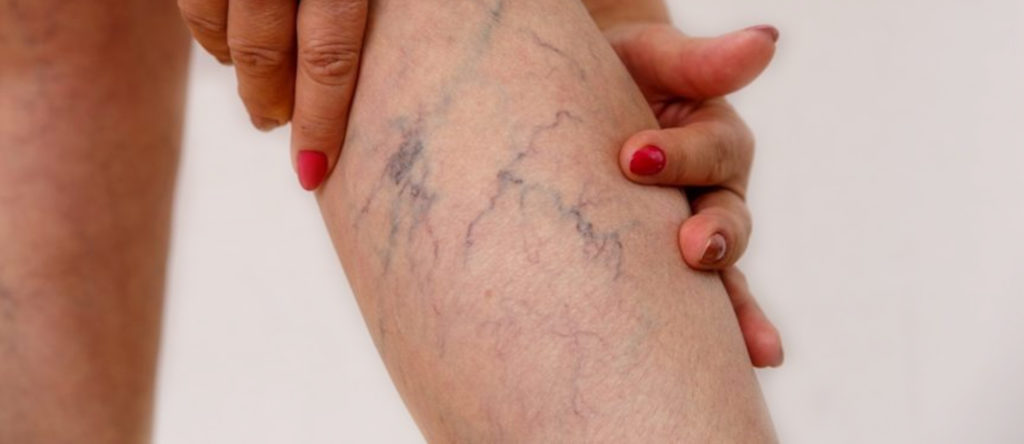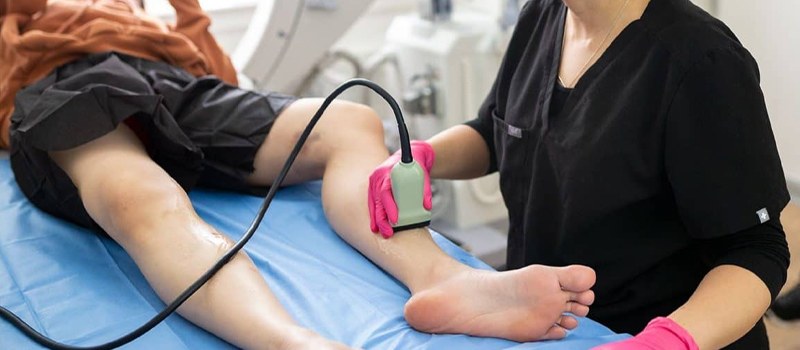An increasing number of professions require workers to stand for a long time. You have a higher risk of developing chronic venous insufficiency if you stand for long periods. Here is what happens -blood pools and cuts back venous return. The result is a buildup of pressure in the legs that can lead to burst capillaries, tissues damage open sores.

What is Chronic Venous Insufficiency (CVI)
CVI is a condition that involves restricted blood flow from the legs to the heart. It causes a buildup of pressure in the extremities putting patients at risk of skin problems, swelling, and ulcers on the legs. The risk factors for CVI include pregnancy, obesity, strenuous occupations that involve prolonged standing or sitting, and smoking. Blood may fail to return to the heart for many reasons, including:
- Damaged valves – When valves can’t open or close properly (venous reflux)
- Weak veins due to genes or pregnancies
- Venostasis due to prolonged standing or sitting
- Varicose veins
- Deep vein thrombosis

Symptoms of CVI
- Swelling
- Pain
- Bluish coloration of skin on legs
- Blood clots
- Venous ulcers
Chronic Venous Insufficiency (CIV) Diagnosis
There are a few diagnostic procedures that vascular specialists use to determine the presence of chronic venous insufficiency. These include:
Magnetic Resonance Venography (MRV)
The doctor uses a large magnet and radio frequencies to produce detailed computer images of your organs and body structure. Using a contrast dye in this procedure causes blood vessels to appear clearly so the physician can identify the affected veins.
Vascular ultrasound
This procedure evaluates the blood flow rate and the overall structure of the legs and veins. In most cases, they will make a duplex ultrasound that uses the B mode and Doppler. B-mode shows an image of the affected blood vessels, and Doppler shows a picture of the velocity and direction of blood flow in the vessel.
Chronic Venous Insufficiency (CIV) Treatment

There are many surgical interventions for CVI, all producing positive results. These include:
Vein bypass – The surgeon takes a healthy vein from elsewhere in your body and uses it to redirect blood flow from your legs, bypassing the damaged vein. Ligation combined with stripping is a simple painless procedure where vascular specialists cut, tie, or remove problematic veins.
Debridement – This procedure aims to treat wounds due to CVI. If the ulcer is infected, the doctor removes the affected tissue, dead cells, and bone to save your leg. Elevating the legs above the heart (when not standing) helps to return blood to the heart, decrease blood pooling, and reduce swelling. Radiofrequency ablation involves eliminating the affected veins using a needle puncture. The RF device’s heat destroys and removes the damaged vein tissue to save you from complicated invasive surgeries.
Ambulatory phlebectomy – In this procedure, doctors will target the affected veins close to the skin surface. They will make tiny incisions on the veins and eliminate damaged vessels using a phlebectomy hook.
Beyond surgical interventions, doctors may also recommend the following treatments for CVI:
- Antibiotics and anticoagulant medications
- Multilayer medicated wrap
- Laser therapy to close up damaged veins
- Sclerotherapy
CVI is relatively easy to treat and isn’t always life-threatening. At Washington Vascular Specialists, we will take all measures to ensure a speedy recovery for you and your loved ones. Talk to us today for the best treatment and care for CVI.



